The grain storage structures were particularly interesting. They look like coffins to the unsuspecting; the locals call them espigueiros. We read that they were specifically instrumented to store corn, a New World crop that ripened late into the summer when the rains started. I had expected to see a handful. Instead we must have come across upwards a hundred in dozens of locations. Awesome!
We rented a small house on the outskirts of Soajo.
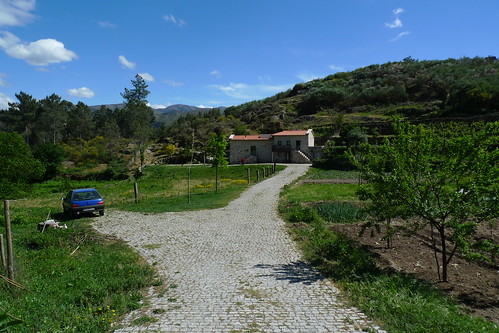
The house was very close to a cluster of espigueiros, granite granaries.
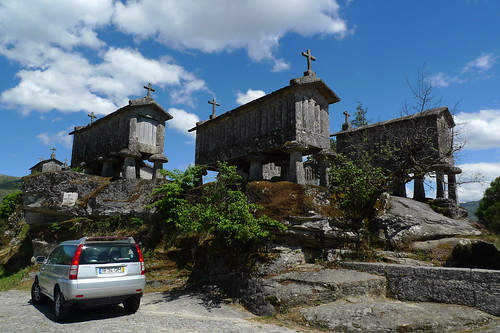

Soajo, the town, has character.
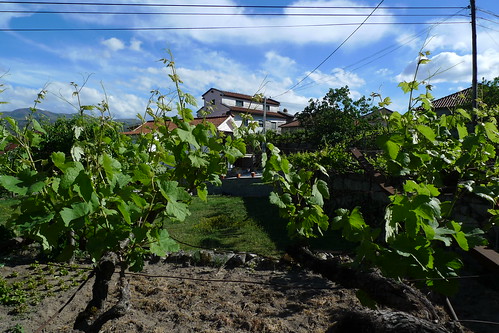
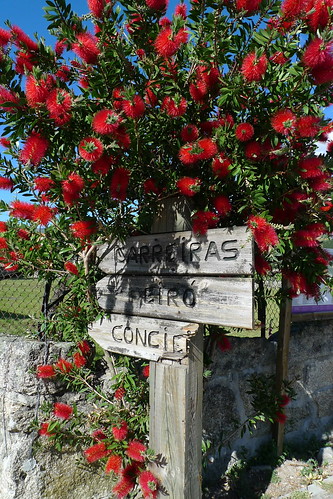
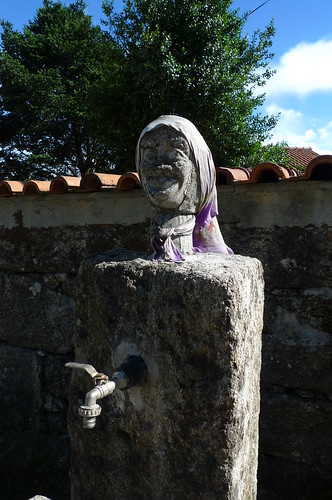
The communal clothes washing tank.
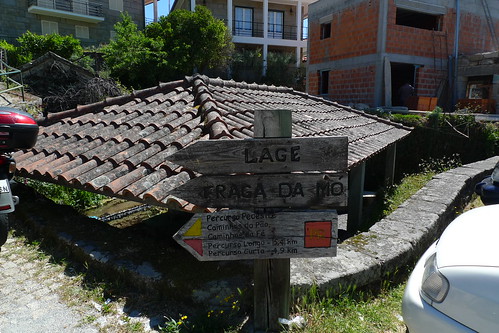
And a nice viewpoint. Notice the granite-reinforced terracing in the 2nd photo below.
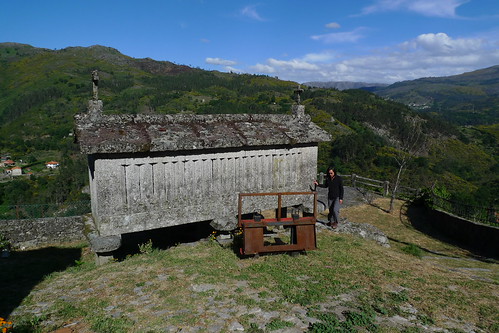
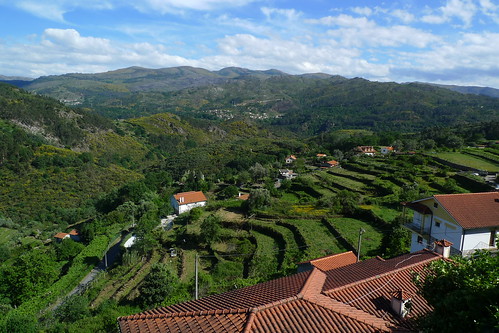
We took three very nice walks. The first, down to the nearby river and back up.
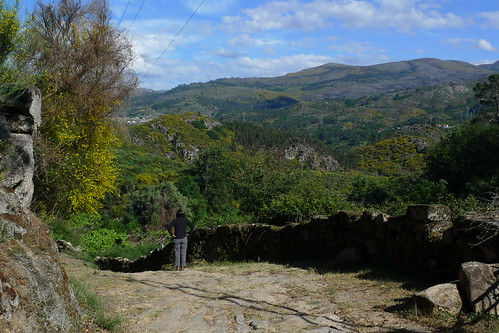
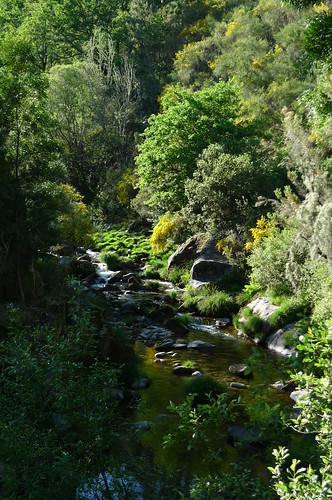
The second, a 20-kilometer ramble up to the high ridge separating Soajo from Peneda, then back....We see some lambs has we leave town.
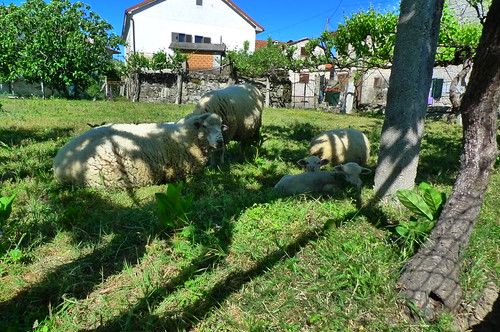
The first part of the walk is on the old granite road going up, up, up.
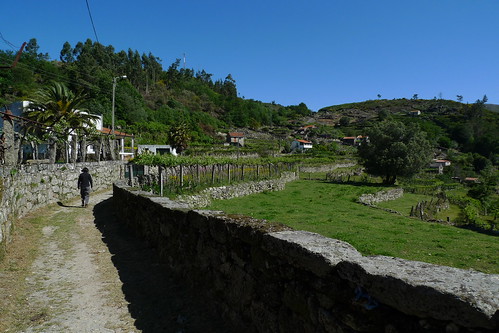
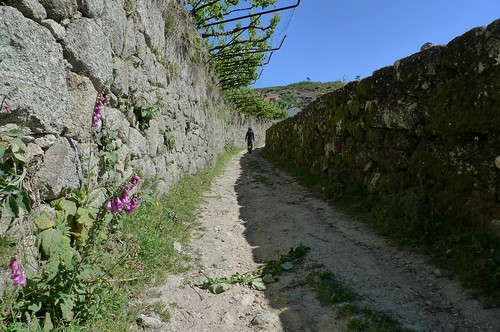
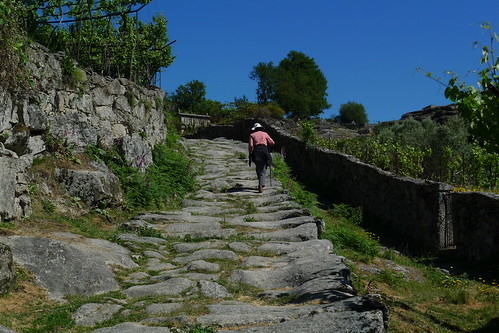
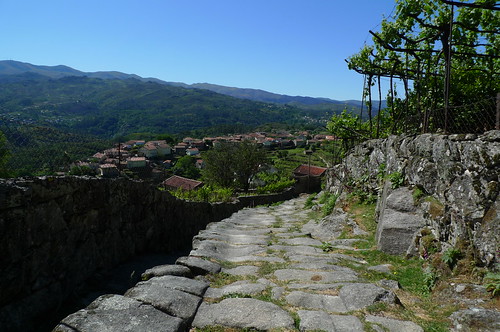
We saw only these two hikers the whole day - plus some cows.
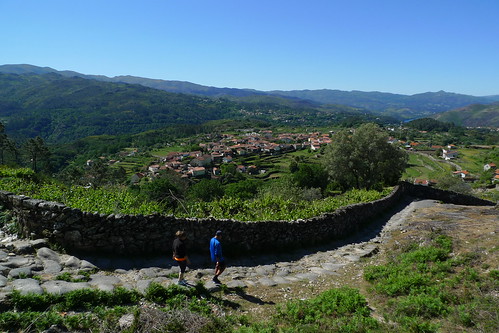
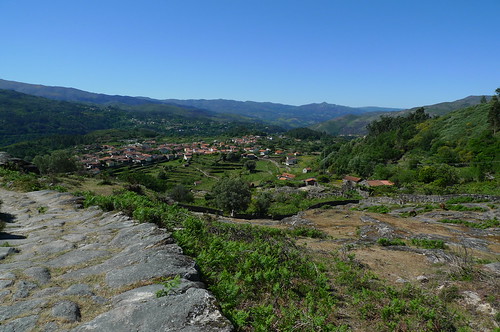
Old mill house; mill powered by water.
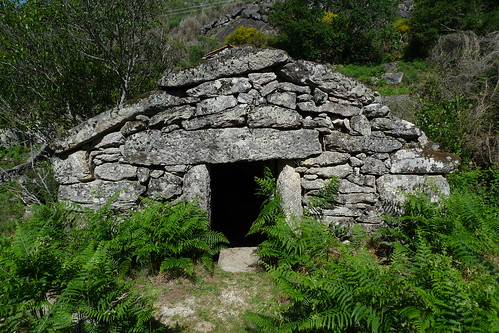
Inside the mill.
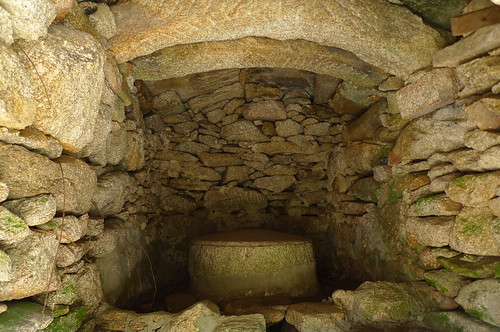
The cattle in this area have distinctive horns.
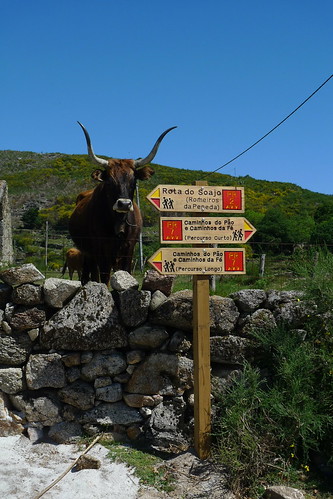
Continuing on the old roads to the hamlet of Adrao.
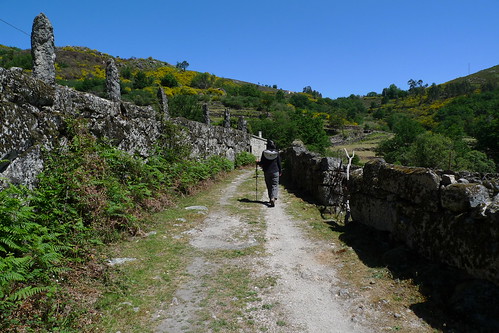
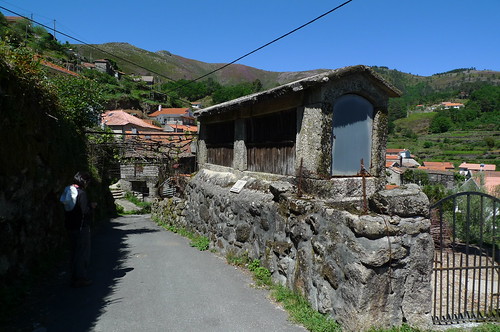
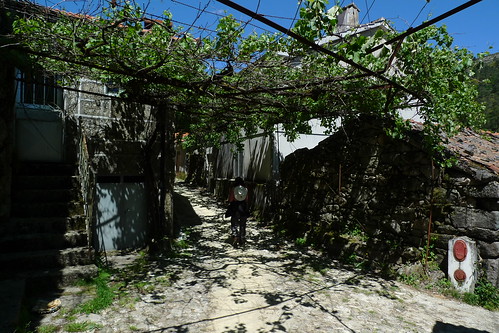
Sun-Ling gets me to pause for a photo.
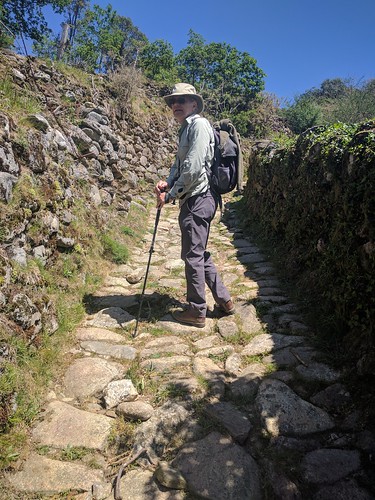
Looking back at Adrao.
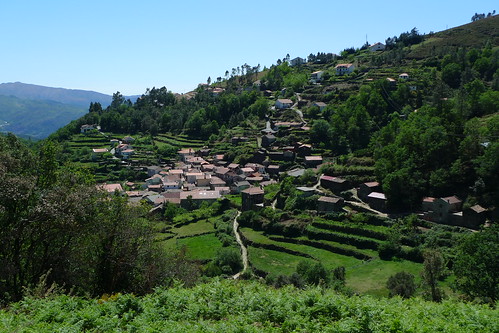
Finally up to 900 meters and we take a break a the cross and the weather stations with a fine view NORTH to the villages of Peneda (right) and Gavieira (left) and Tibo (below).
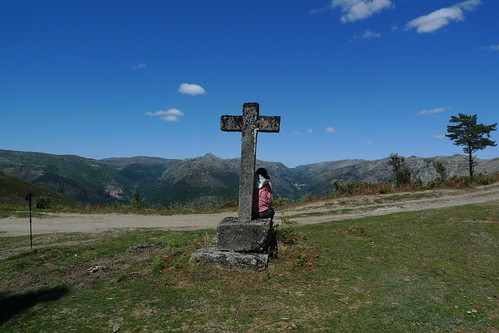
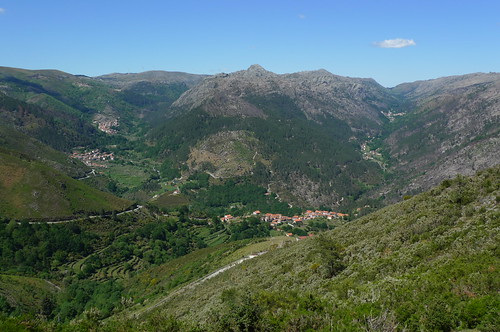

And back to town, partially on the paved road. Here's a close look at a granite wall. Beautiful.
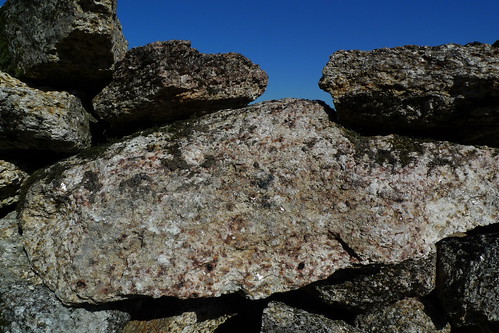
We also saw some domed stone structures. Some were dwellings, some were mills (we guess).
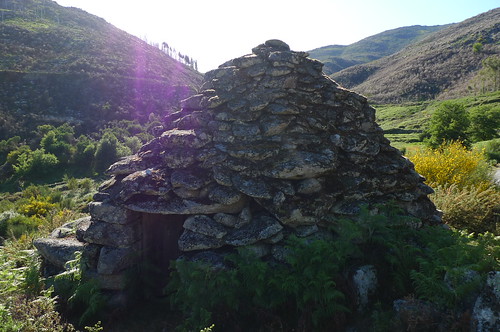
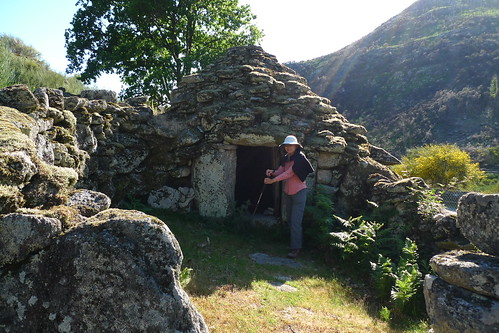
And a third stroll on the morning before we catch buses to Braga.
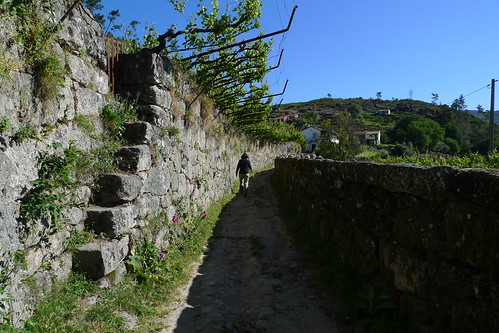
Passing an irrigation channel (at right).
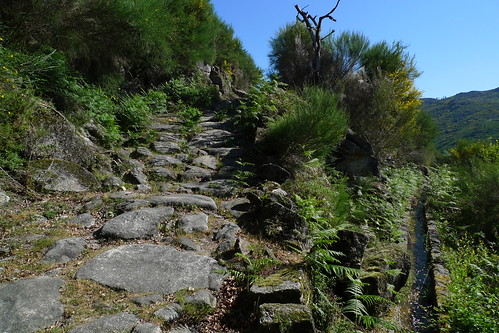
Loads of ferns along this part of the old road.
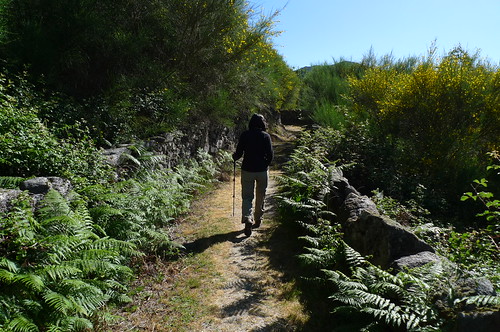
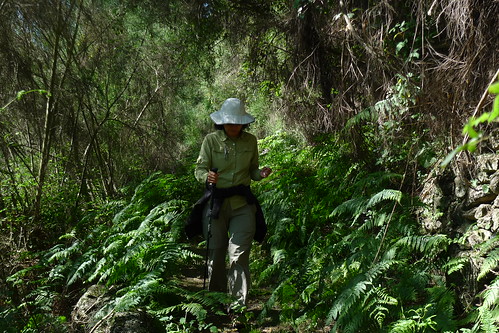
Stone bridge.
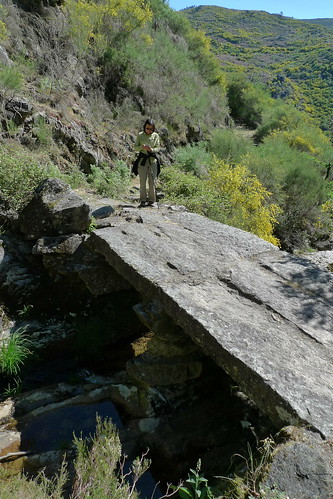
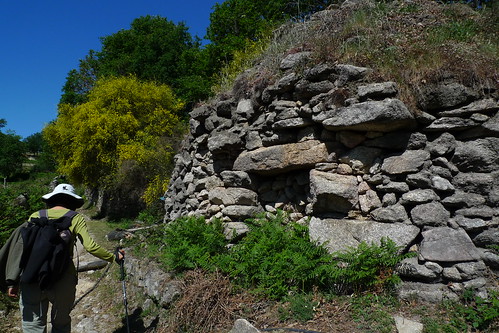
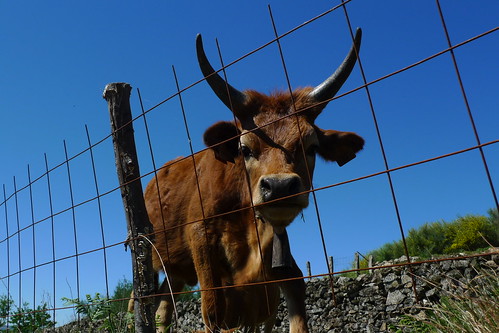
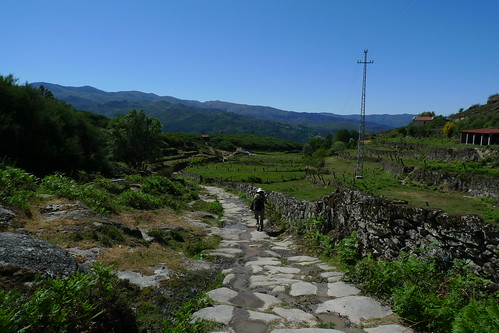
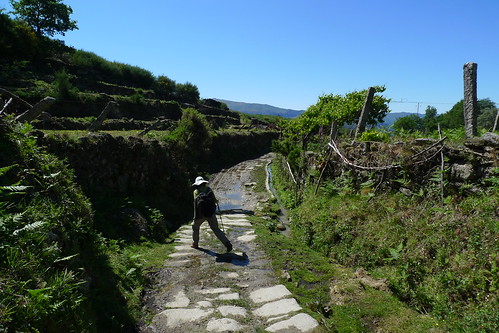
Check out the ruts in the road; put there on purpose I believe to keep the wagons from sliding off the rock.
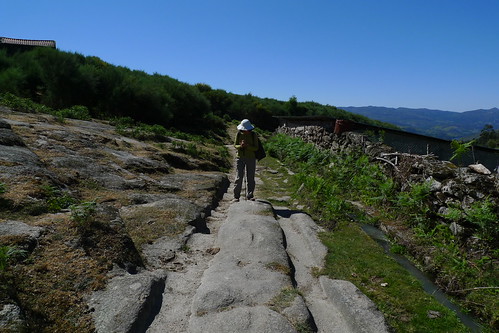
Almost back to Soajo.
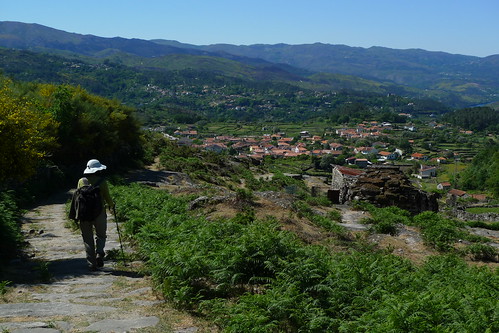
More mills.
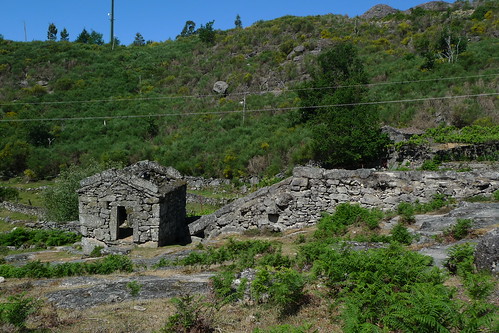
Just before I took this pic, a surefooted older lady with a stout walking stick breezed by us headed downhill.
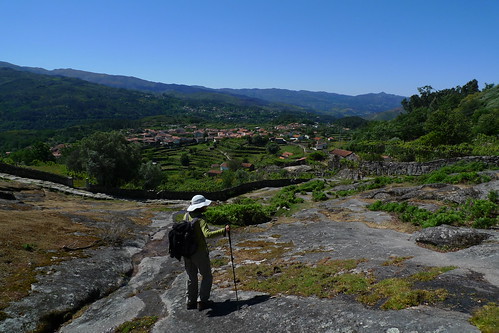
Getting ready to plow.
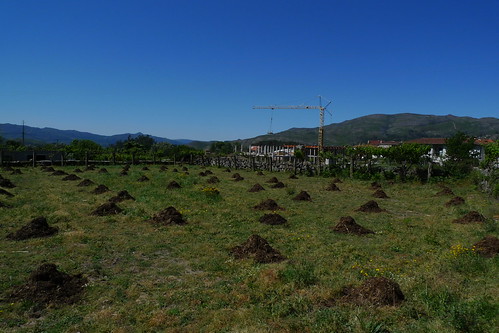

2 comments:
You still haven't shown us a photo of a quarry. Whence comes all this granite?
Crash, We never saw a quarry as such. And since the ground is basically solid granite, it seems that the surface granite is cut and used right in the place it is needed, with no big hole left that could be deemed a quarry. Does that make sense?
Post a Comment